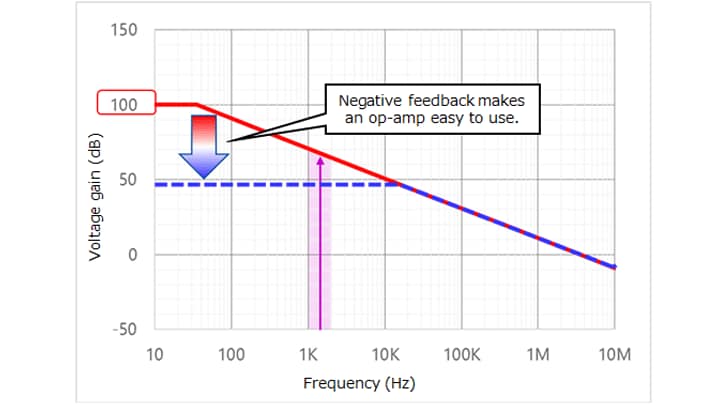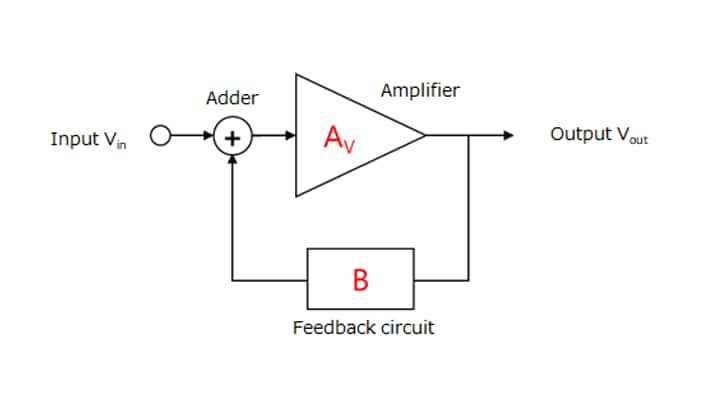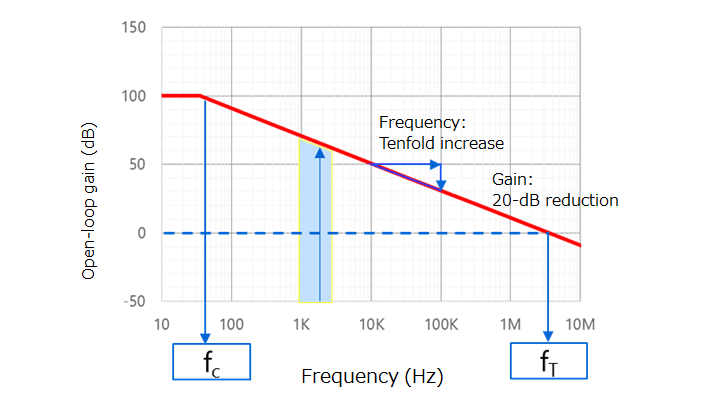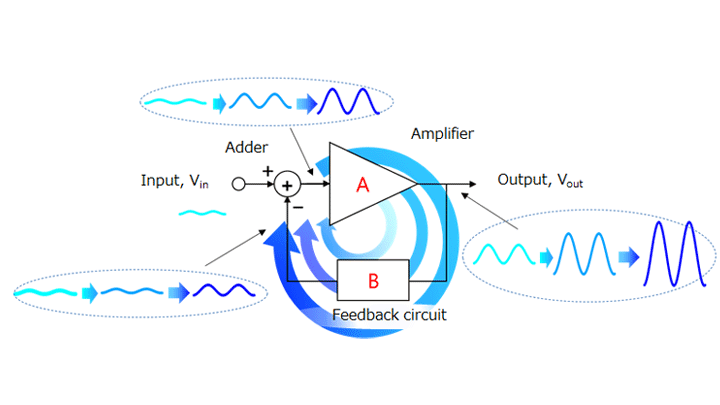- General Top
- SEMICONDUCTOR
- STORAGE
- COMPANY
-
My ToshibaSemicon
- Semiconductor Top
-
ApplicationsAutomotive
Body Electronics
xEV
In-Vehicle Infotainment
Advanced Driver-Assistance Systems (ADAS)
Chassis
IndustrialInfrastructure
BEMS/HEMS
Factory Automation
Commercial Equipment
Consumer/PersonalIoT Equipment
Healthcare
Wearable Device
Mobile
Computer Peripherals
-
ProductsAutomotive Devices
Discrete Semiconductor
Diodes
Transistors
Logic ICs
Analog Devices
Digital Devices
Wireless Devices
※
: Products list (parametric search)
Power SemiconductorsSiC Power Devices
※
: Products list (parametric search)
Isolators/Solid State RelaysPhotocouplers
Digital Isolators
Solid State Relays
Fiber Optic Transmitting Modules
※
: Products list (parametric search)
MOSFETsIGBTs/IEGTsBipolar Transistors※
: Products list (parametric search)
Diodes※
: Products list (parametric search)
MicrocontrollersMotor Driver ICsIntelligent Power ICs※
: Products list (parametric search)
Power Management ICsLinear ICs※
: Products list (parametric search)
General Purpose Logic ICsLinear Image SensorsOther Product ICsOther Product ICs
※
: Products list (parametric search)
-
Design & Development
Design & Development
Innovation Centre
At the Toshiba Innovation Centre we constantly strive to inspire you with our technologies and solutions. Discover how to place us at the heart of your innovations.
-
Knowledge
Knowledge
Highlighted Topics
Further Materials
Other
- Where To Buy
- Part Number & Keyword Search
- Cross Reference Search
- Parametric Search
- Stock Check & Purchase
This webpage doesn't work with Internet Explorer. Please use the latest version of Google Chrome, Microsoft Edge, Mozilla Firefox or Safari.
require 3 characters or more. Search for multiple part numbers fromhere.
The information presented in this cross reference is based on TOSHIBA's selection criteria and should be treated as a suggestion only. Please carefully review the latest versions of all relevant information on the TOSHIBA products, including without limitation data sheets and validate all operating parameters of the TOSHIBA products to ensure that the suggested TOSHIBA products are truly compatible with your design and application.Please note that this cross reference is based on TOSHIBA's estimate of compatibility with other manufacturers' products, based on other manufacturers' published data, at the time the data was collected.TOSHIBA is not responsible for any incorrect or incomplete information. Information is subject to change at any time without notice.
require 3 characters or more.
2.4. Basic op-amp applications
In the most basic form, op-amps are used as noninverting amplifiers (Figure 2-10) and inverting amplifiers (Figure 2-11). Both noninverting and inverting amplifiers have negative feedback (with the output connected to VIN(-)) as described in the previous section.
The closed-loop gain (ACL) is shown in the following figures. The gain can be calculated easily by using the concept of a virtual short-circuit (also known as a virtual short, virtual ground or imaginary short) described in the next section.
The noninverting amplifiers have a very high input impedance since their input is directly connected to an op-amp. In contrast, the input impedance of the inverting amplifier is lower than that of the noninverting amplifier because VIN(-) and VIN(+) have the same potential as they are virtually short-circuited and because R1 acts as input impedance.
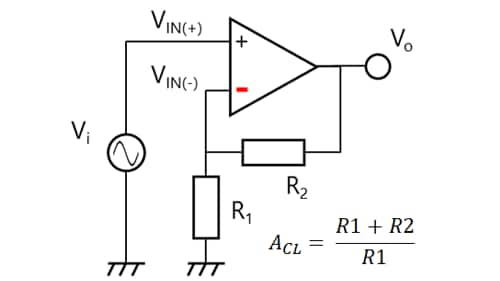
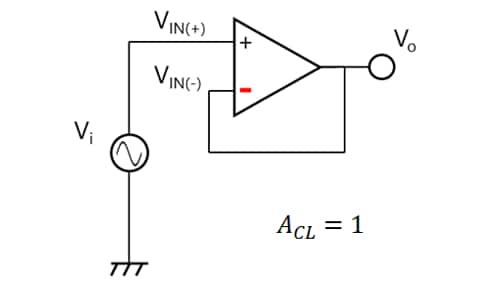
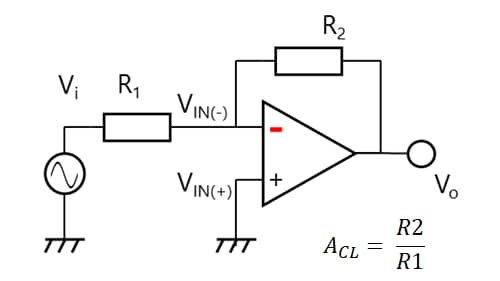
Figure 2-12 shows a voltage follower. The voltage follower can be regarded as a noninverting amplifier with an R1 of infinite resistance and an R2 of zero. Since the voltage follower has a low gain (unity gain, AV=1), it has a wide bandwidth. Therefore, care should be taken since it is susceptible to the effect of a second pole as discussed in Section 2.3, “Oscillation.” Most op-amps can be used as unity gain amplifiers since they have a second pole at a frequency sufficiently higher than the unity gain cross frequency (fT). However, they might go into oscillation because of wire or load capacitance. If the datasheet for a given op-amp states that it can be used at a unity gain, it can be used as a voltage follower. Contact Toshiba’s sales representative if you want to use any other op-amp as a voltage follower.
In addition, op-amps have various applications, including a differential amplifier (subtraction circuit) as well as an adder and integrator circuits.
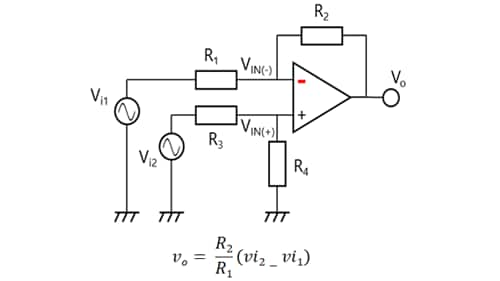
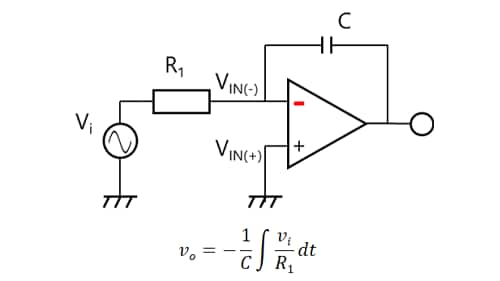
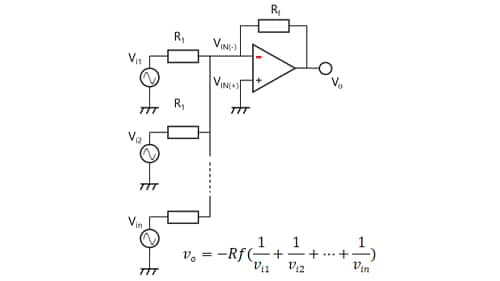
Related information
Chapter2 Using an op-amp
Related information
- Products
- Application Notes
- FAQs
- Parametric Search
- Stock Check & Purchase


